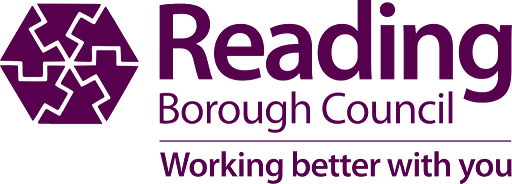
Council hails success of footway preservation trial
- Innovative technique is quicker, cheaper and more environmentally friendly than tarmacking
- Work can be performed by Council staff rather than contractors
- Improvements form part of a wider Highways investment including main and residential road resurfacing
TRIALS are under way across Reading to ensure better pavements for pedestrians which will sustain a high standard for longer.
Reading Borough Council is one of the first in the UK to trial an innovative technique which involves applying a barrier coating on to existing pavements that seeps into the existing surface to preserve and rejuvenate it, extending its life and negating the need for more costly and time-consuming reconstruction.
Three trial sites – Commercial Avenue, Shirley Avenue and Sun Street – have had the preservation treatment applied so far.
The easy to apply treatment is intended for use on pavements which are still in relatively good condition but showing signs of deterioration.
The application is quicker and more cost effective than resurfacing, which means more of Reading’s footways can be enhanced and have their lifespan extended until resurfacing is eventually required.
The new technique is likely to be rolled out as an extensive footway preservation programme around the whole borough next year.
Additional benefits of this method of footway preservation include:
- Treatment is cold applied and therefore has a lower carbon footprint than traditional tarmacking methods
- Up to ten years of extended life for a pavement before resurfacing is required
- Less inconvenience to residents as ease of application reduces a week’s work down to one day compared to resurfacing
- Preservation can be conducted by the Council’s own in-house Highways team, reducing time and costs to prepare tenders and manage contractors
- Time and financial savings mean a much greater number of footways can be improved compared to a focus on traditional resurfacing with tarmac
The footway rejuvenation and preservation trial forms just one aspect of an investment in improvements in getting around Reading for residents.
In August the Council began a two-year main road resurfacing programme which will see 76 sections of major roads around Reading improved for residents, and that £4.5m programme forms part of an £8m investment that will also see a substantial number of residential roads improved over five years, with around 100 more residential roads set to be resurfaced later this financial year.
The Council’s biggest ever road resurfacing programme – which includes a now completed £9m investment in over 700 newly resurfaced residential roads over three years – has already shown impressive results. 80% of Reading’s residential roads are now classed as being in “good” condition, up from 35% before the improvement programme commenced in 2019.
Karen Rowland, Lead Councillor for Environmental Services and Community Safety, said:
“We know how important getting – and keeping - our roads and footways in good condition is to residents, and that’s why we continue to work hard and to find smarter and more environmentally friendly ways of delivering just that. Alongside current work to improve main roads, and upcoming plans to improve even more residential roads to a higher standard, this trial has shown us how we can minimise time for pavement repair for residents from a week to a single day! The fact that it saves money and resource is testimony to our Highways team who are constantly looking at ways to save money, maximise resources and improve and sustain our assets”.

